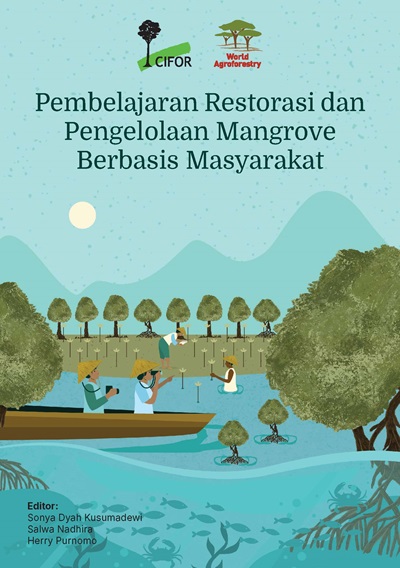Globally, carbon-rich mangrove forests are deforested and degraded due to land-use and land-cover change (LULCC). The impact of mangrove deforestation on carbon emissions has been reported on a global scale; however, uncertainty remains at subnational scales due to geographical variability and field data limitations. We present an assessment of blue carbon storage at five mangrove sites across West Papua Province, Indonesia, a region that supports 10% of the world's mangrove area. The sites are representative of contrasting hydrogeomorphic settings and also capture change over a 25 year of LULCC chronosequence. Field-based assessments were conducted across 255 plots covering undisturbed and LULCC-affected mangroves (0-, 5-, 10-, 15- and 25-year-old post-harvest or regenerating forests as well as 15-year-old aquaculture ponds). Undisturbed mangroves stored total ecosystem carbon stocks of 182-2730 (mean ± SD: 1,087 ± 584) Mg C/ha, with the large variation driven by hydrogeomorphic settings. The highest carbon stocks were found in estuarine interior mangroves, followed by open coast interior, open coast fringe and estuarine interior forests. Forest harvesting did not significantly affect soil carbon stocks, despite an elevated dead wood density relative to undisturbed forests, but it did remove nearly all live biomass. Aquaculture conversion removed 60% of soil carbon stock and 85% of live biomass carbon stock, relative to reference sites. By contrast, mangroves left to regenerate for more than 25 years reached the same level of biomass carbon compared to undisturbed forests, with annual biomass accumulation rates of 3.6 ± 1.1 Mg C/ha/year. This study shows that hydrogeomorphic setting controls natural dynamics of mangrove blue carbon stocks, while long-term land-use changes affect carbon loss and gain to a substantial degree. Therefore, current land-based climate policies must incorporate landscape and land-use characteristics, and their related carbon management consequences, for more effective emissions reduction targets and restoration outcomes.
Download:
DOI:
https://doi.org/10.1111/gcb.15056
Dimensões Contagem de citações:




















